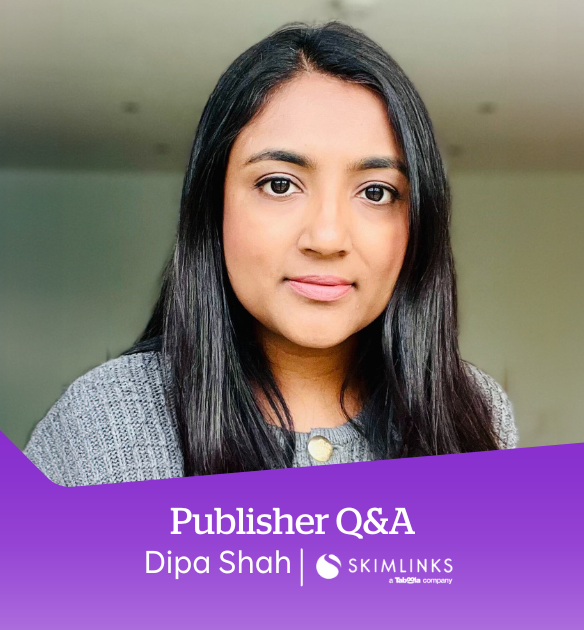RAIC Insights: Dispelling affiliate marketing myths – part 2
The Rakuten Advertising International Collective (RAIC) aims to showcase the strategies and steps that will elevate your affiliate thinking. In our latest post, Dave Trolle, founder of digital consultancy and Affiliate Marketing specialists Customer First Digital, introduces some of the most common myths surrounding affiliate marketing and how to bust them.

In the previous post in this series, we tackled the misconception that affiliate is a static industry, focused on voucher and cashback sites alone. Here, we look at another common objection – the issue of incrementality.
Would I have got the sale anyway and is affiliate eroding margin?
These are not new questions to answer, with the affiliate channel frequently subjected to scrutiny about incrementality over the last 20+ years. However, in the face of fluctuating global circumstances, we have seen the need for answers to these questions intensify. Turbulent economies mean consumers and brands are more cost-conscious, with more shoppers using cashback and voucher sites, and more advertisers looking to save where possible on their marketing investments.
With this in mind, we urge all brands to take a more holistic view, especially when looking at the incrementality of the channel, especially the ones that are typically at the conversion end of the funnel.
Understanding the role in the customer journey
When it comes to voucher codes and cashback affiliates, it’s important to remember that no single advertiser can change shopper behaviour. Deal savvy shoppers will always consider these sites prior to making a purchase. And quite often if you’re not there and your competitor is, you will suppress customer acquisition and retention.
Firstly, we would advocate understanding what the role of the publisher is in the initial sales journey, beyond the last-click. When looking at sales journeys, the ‘goal hanging football analogy’ is often used for such affiliates, where sales are always acquired immediately after, say, a paid search click. However, we often see the reverse with voucher code sites not receiving the full credit for the sale, as consumers view and utilise the code when their last click is via another marketing source. These sales should still be partially attributed to the voucher code site, as without the awareness that the publishers create, the customer will most likely have not converted.
Understanding this attributed value can ensure your commission strategy is representative of the actual value that an affiliate drives, leading to more favourable support from the publishers. The same case can also be made for deduping against other channels. Deduping can lead to negative customer backlash if sales that shoppers are expecting to be paid out are declined. Rather than creating an industry of declining sales (and creating more admin for your team), we’d advocate for creating a commission strategy aligned to the role in the customer journey, along with the longer-term value that the publisher provides (more details below).
Measuring the long-term return
Secondly and most importantly, looking at the longer-term impact of this customer is essential. Turning the analysis from a negative (the eroding margin question) to a positive (understanding how profitable the customer actually is), requires a 360-mindset shift. As part of this analysis, we look at how frequently customers acquired by the affiliate channel shop and what their customer-lifetime-value (CLV) contribution is, especially when benchmarked to business averages. From our experience, the CLV is favourable when compared to other marketing channels, with clients reporting more than 15% higher revenue from an affiliate. This should be assessed in combination with the original Cost-Per-Acquisition (CPA) for the sale. We typically find that it is fast forgotten that the CPA from affiliates can be at least 50% more efficient (if not greater) than Google ads. When both metrics are combined, the value of an affiliate customer can’t be argued with.
Test, test and retest
A/B testing is often an overlooked technique within the affiliate space, however, it is at the heart of our approach to answering value questions for our clients. These can be as simple as running different commission levels or testing different spend thresholds to improve average-order-value. The possibilities are endless.
In the first part of this myth-busting blog, we mentioned the emergence of on-site technology solutions, such as Revlifter and Intent.ly. Such providers have come to the forefront of affiliate marketing over recent years, providing brands with new accessible technology that enhances a customer experience, at a low-risk and low-cost entry point. However, allowing personalised messaging to be served in scenarios, such as when a user shows exit intent, always raises the same questions that have been asked of Cashback and Voucher Code sites. Carrying out such tests has evidenced the extent to which overall trading metrics and consumer behaviour, such as conversion-rate and average-basket-value, have been positively affected.
However, it’s important to get the incentive level and the timings of serving such messaging right. A recent example with one of our clients showed the optimal combination was to not offer an incentive if a customer came to the site and left initially, but returned back again and showed the same behaviour. Without testing, we would not have uncovered how best to drive value.
So, there you have it – more myths busted and more ammo for you to help champion the power of affiliate marketing with the leadership team of your business! Keep an eye on the Rakuten Advertising blog for future posts from RAIC members on the same topic.
For more RAIC insights subscribe to our blog or visit contact us here.


